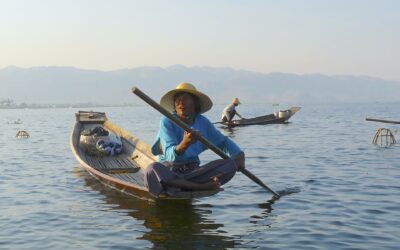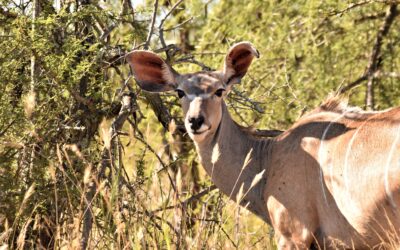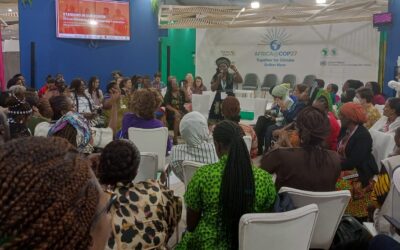A TBA training team is in Kenya this month, explaining how to bring life and value back to degraded land and forests for the benefit of biodiversity and local communities.
TBA Director, Rosie Trevelyan, and Specialist Course Co-ordinator, Paul Mugo are leading a pioneering training workshop on the crucial role that restoring degraded land in Africa has in improving livelihoods, mitigating climate change and creating habitats for biodiversity.
The TBA was invited by the WWF Russell E. Train Education for Nature Program (EFN) to design and deliver the new course for EFN Reforestation Program grantees in Africa.
Working with African forest restoration experts, the aim of the TBA course is to build the capacity of 19 conservation managers from Cameroon, DRC, Madagascar, Kenya, Tanzania, and Uganda so they are able to enhance the impact of their reforestation and restoration projects.
“There is a huge potential to restore forests in a way that can benefit people as well as biodiversity,”
says Dr Trevelyan. “We need to be clear about what we want restoration to achieve and all the key players, from communities to government, need to take part.”
The participants are finding out about different approaches to restoration, and the need to understand local social and political issues. They have visited some restoration sites in Kenya and talked to people who are carrying it out on the ground.
Understanding what has caused forest degradation in the first place is key to any successful restoration project. Forest will often return through natural regeneration, where there is neighbouring forest. In more extreme circumstances, it is necessary to plant trees and protect them so that they can grow into a healthy forest that will support biodiversity, ecosystem services and livelihoods.
Priority areas for reforestation include coastal areas where mangrove forests, which offer huge benefits, have been degraded or removed. Not only do they provide habitat for fish and shellfish, which sustain coastal communities, they also store more carbon than terrestrial forests and prevent coastal erosion.
Another priority is denuded water catchment areas, where the aim is to restore stable and reliable water supplies.
While recent research has improved our understanding of how restore forests, this knowledge is rarely shared effectively with those who are working on the ground and who can influence forest management.
“There is a great need for training to help guide informed decision making about restoring African tropical forests,” says Dr Trevelyan.
Those who benefitted from the TBA course are heading home with new resolve to increase their impact. “I have learnt that I can convince my government that restoration has more benefits than meets the eye,” said Marion Iceduna from Uganda.
Rakotonarivo Rinah Zo Nandrianina, from Madagascar, said: “This course has changed my perception. I used to think that reforestation was about all about planting trees and planting again, but I discovered we can use the power of nature and help forests to recover naturally using assisted natural regeneration. I have never done this before and now I really want to do this on our site.”
24.08.17





